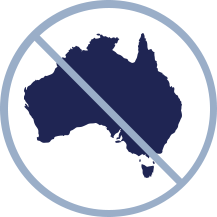On April 7 2020 the government announced another stage of coronavirus economic support. This announcement was for commercial tenants who are affected by coronavirus. Many businesses have had to close their doors or operate at significantly reduced levels of sales at this time. These measures, combined with the previously announced economic packages, are designed to help many of these businesses survive this unprecedented crisis and lessen the overall economic impact from the pandemic.
Who is Eligible to Claim Commercial Rent Relief?
There are two criteria that must be satisfied for a commercial tenant to be eligible for the rental reductions.
- The business must have a turnover of $50 million or less
- The business tenant must be eligible for and have applied for JobKeeper support
Summary of the Essential Components of Commercial Rent Relief:
The following applies to eligible tenants, for so long as the pandemic lasts and for a reasonable recovery period afterwards:
- Landlords cannot evict tenants for non-payment of rent.
- Rental prices cannot be increased (unless the lease agreement is based on a set percentage of business turnover and accordingly already fluctuates with business turnover).
- Any savings on lease outgoings (council rate, land tax, insurance reductions etc) should be passed on to tenants.
- A landlord must reduce the lease payments by at least the same percentage as the business’ turnover has reduced. This means if a business has lost 100% of their income their rental payment requirements are reduced by 100%. If a business has lost 50% of their income their rental payment requirements must be dropped at least 50%.
- 50% of the rental reductions must be waived completely. Where a tenant’s business will unduly suffer if only 50% of their rental is waived, then the landlord is required to waive a higher proportion of the rental.
- The other 50% (or whatever remaining percentage there is) of the reduced amount of rent, can be deferred. Any deferred rent must be repaid over a period of time that is no less than the remainder of the lease or 24 months, whichever is longer. Longer repayment terms, or additional rental waivers, should be agreed to where a tenant will not be able to continue operating under the minimum repayment requirements.
- Tenants are able to waive a landlord’s obligations (listed above) if they are in a financial position to do so. This allows scope for tenants and landlords to reach their own individual agreement based on their own situation.
- Both parties are expected to keep a clear, honest, and open line of communications between them to facilitate an ongoing relationship and work towards resuming normal business operations when possible.
- Binding mediation is possible when tenants and landlords cannot reach their own agreement.
What Relief is Available for Commercial Tenants?
On March 29 2020, the government announced that actions were being made to place a moratorium on evicting tenants (in both commercial and residential property), for non-payment of rent due to job loss related to the coronavirus pandemic. Now the government has also made it clear that landlords are not entitled to draw down on any security for the property to cover costs during this period.
Under the additional measures announced April 7, the government confirmed that landlords are required to freeze rental increases. There is an exemption for businesses that are already operating under a retail lease where rent is paid based on a set percentage of turnover and accordingly fluctuates with turnover anyway. This restriction applies for the duration of the pandemic plus a “reasonable recovery period”. In addition, legislation has now been passed to ensure that landlords cannot apply any lease prohibitions or penalties relating to reductions in opening hours or ceasing trade as a result of the pandemic.
Where landlords receive reductions in charges such as land tax, council rates or insurance, they are required to pass on these savings to the tenants in the appropriate proportion per the terms of their lease. Where tenants are not able to trade (because their business premises has been closed during the pandemic), then the landlord should waive expenses relating to the general use of the property.
Most substantially, under this new scheme
commercial landlords are required to reduce their tenant’s rental payment
requirements in proportion to the reduction in their business. These rental
reductions can be in the form of a combination of rental waivers as well as
rent deferrals and can constitute up to 100% of the normal rental fee on a
case-by-case basis.
The requirements state that rent reductions are proportioned based on the
reduction in income that the business has experienced as a result of the
coronavirus. However, tenants and landlords are able to reach their own
agreement based on their own situation.
No fees, interest or charges can be applied to any rent waived or deferred.
Rent Waivers
Full waivers of rent are required to account for at least 50% of the reduction in rent payable. This means that at least half of the determined rental reduction must be completely waived by the landlord. This is just a minimum requirement. More than 50% of the reduction should be waived where failure to do so would impact the tenant’s ability to meet ongoing obligations. This should, however, be balanced with the landlord’s capacity to waive more than 50% of the temporary rental reduction.
If tenants have the capacity to continue to make their rental payments, or would be able to catch up on more than 50% of missed payments, then they are able to agree to waive the landlord’s requirement to provide a 50% minimum waiver on rental reductions. This gives the tenants and landlords scope to reach their own unique agreement.
Rent Deferrals
The remainder of rental reductions can be deferred. This means that rental payments are still required but can be put off with repayments being spread over the remaining time of the lease or a 24 month period, whichever is longer. This repayment term can be different if both parties agree to this.
Specifically, the repayment period is required to be no less than 24 months, even if the lease period does not extend this long. This helps ensure that large catch up payments are not too burdensome for tenants where their lease is ending within 24 months.
Example of Rental Reduction
This is an example of how a rental situation may apply to Sally’s clothing store:
- Sally’s clothing store normally has a turnover of around $200,000 a month.
- Her monthly lease on the shop is $20,000.
- During the pandemic Sally closes her store and only offers deliveries to customers. She is now turning over $50,000, which is a 75% reduction from her normal level of turnover.
- Sally’s clothing store applies for the Jobkeeper program, to both retain and pay the staff who have been stood down during this time and to supplement the wages of the few staff continuing to work to meet online orders and deliveries.
Since Sally’s business has seen a 75% reduction in turnover, she is guaranteed 75% cashflow relief on her lease (unless she agrees otherwise). Through discussions with the landlord Sally and her landlord agree to the basic provisions of the rental relief requirements. This means Sally is able to pay 75% less rent while the storefront remains closed, with 50% of the reduction being fully waived. This arrangement is to be reassessed monthly until operations can resume as normal.
This means that Sally now:
- Pays her landlord $5,000 a month for her lease.
- $7,500 of her rent is deferred and will be accumulated into a rental loan that needs to be paid back.
- $7,500 of her rent is waived. This portion of the rent will never need to be paid.
Let’s say the pandemic restrictions lasts for six months, after which time Sally’s clothing store is able to open its doors. When the shop reopens business is immediately seeing turnovers in excess of their previously normal levels of trade. This allows Sally and her landlord to agree that there is no need to extend their agreement to allow for a period of recovery. There is no reason to believe that the repayments of the deferred rent will impact Sally’s ability to continue operating the clothing store.
At this point Sally resumes paying $20,000 per month for her lease. She also has a $45,000 debt (6 months x $7,500) for deferred lease payments. At this point Sally has 30 months left on her current lease. Since this is longer than the minimum repayment time frame of 24 months, Sally is able to spread her repayments out over the full 30 months left on the lease. This means she pays an additional amount of $1,500 per month to catch up on the deferred payments.
Sally is free to make additional repayments to clear the deferred debt early if she agrees to do this with her landlord, however the landlord cannot require her to do this.
What are the Tenant Obligations?
Tenants are required to:
- Communicate with their landlord to make appropriate arrangements.
- Remain committed to the terms of their lease, subject to reasonable amendments made to enable to lease to continue through the pandemic.
- Provide honest, open and accurate information to their landlord.
- Not take advantage of the situation where they are in the capacity to continue normal payments, or operate with lesser reductions than the minimum required, particularly if their landlord’s situation makes it difficult for them to pass on the minimum required benefits.
Landlord and Tenant Relationships
Prime Minister Scott Morrison emphasised the need for landlords and tenants to be in communication during this time, in order to preserve essential business relationships and deal with the individual factors of each individual situation.
Landlords are legally required to discuss rental arrangements with their tenants and, according to Scott Morrison, refusal will mean they “forfeit their way out of the lease”.
In essence, the government is providing minimum legally required guidelines for tenants and landlords to help reduce the number of businesses who will not be able to financially get through this crisis. Businesses are expected to operate with integrity to support each other, meaning that parties can legally reach an agreement that either exceeds, or does not meet the minimum requirements, as long as both parties agree to it without coercion and the agreement does not put the tenant in a position where the arrangement makes it untenable for them to continue business operations.
Support for Landlords
At this time the government has asked larger commercial landlords to seek support from their banks to help with these arrangements. This presently means seeking deferral of mortgage payments where necessary and applying for business loans if additional funds are required.
Unfortunately, this may mean that some commercial landlords, such small business landlords who have no savings and other sources of financial support may find their economic situation untenable, leaving them to seek alternative options such as selling.
There is currently no word if there will be further measures announced to alleviate economic stress for landlords, who are unable to remain viable under their obligations to waive rental fees for their tenants.
Mandated Code of Conduct for Commercial Leases
The government has released a mandated code of conduct for commercial leasing principles. You can find the full code of conduct here.
This code of conduct imposes a set of “good faith leasing principles” between the landlord and tenant in situations where the tenant is eligible for the JobKeeper program. These principles include guidance on arrangements including:
- Requiring landlords and tenants to work together to facilitate the return of normal trade when this becomes possible.
- Open, honest and transparent communication and exchange of information to achieve this goal.
- Factoring in individual situations and circumstances on the impact that the COVID-19 pandemic has had, as well as a “reasonable recovery period”.
The code of conduct also covers the leasing principles that must be applied on a case-by-case basis. The principles cover the obligations and responsibilities of both the tenants and the landlords. This means that while landlords cannot evict tenants and must offer rental waivers and deferrals, tenants are also required to act in a reasonable manner, paying rent as they can and negotiating for suitable arrangements based on their actual situation.
What if Tenants cannot reach a suitable agreement with their Landlord?
Where the COVID-19 pandemic has resulted in the need for amendments and rental relief to be negotiated, but the landlord and tenant are not able to reach a suitable agreement between themselves, then the parties should follow the usual dispute resolution process that applies to their state or territory.
This process may lead to binding mediation between the two parties.
Both landlords and tenants are prohibited from using the mediation process just to stall the process to reach a reasonable agreement.
Residential Tenants
This announcement dealt with commercial properties only.
Residential tenancies are being dealt with by the state and territory governments.
Resuming Normal Business Operations
In summary, this means that many small business commercial tenants who are otherwise unable to stay afloat because of the impact of the coronavirus, are being thrown a life raft.
Lease reductions coupled with Jobkeeper support, and waivers in government fees, will be enough to help ensure that many businesses can get through this economic crisis. The aim of this is to facilitate the return of business as normal, as smoothly as possible, when it is safe to do so. While not all businesses will be saved by these measures and we can’t predict all of the potential complexities involved as we continue to witness the impact of this virus, this economic relief will go a long way towards helping many businesses return to normal when they can.



